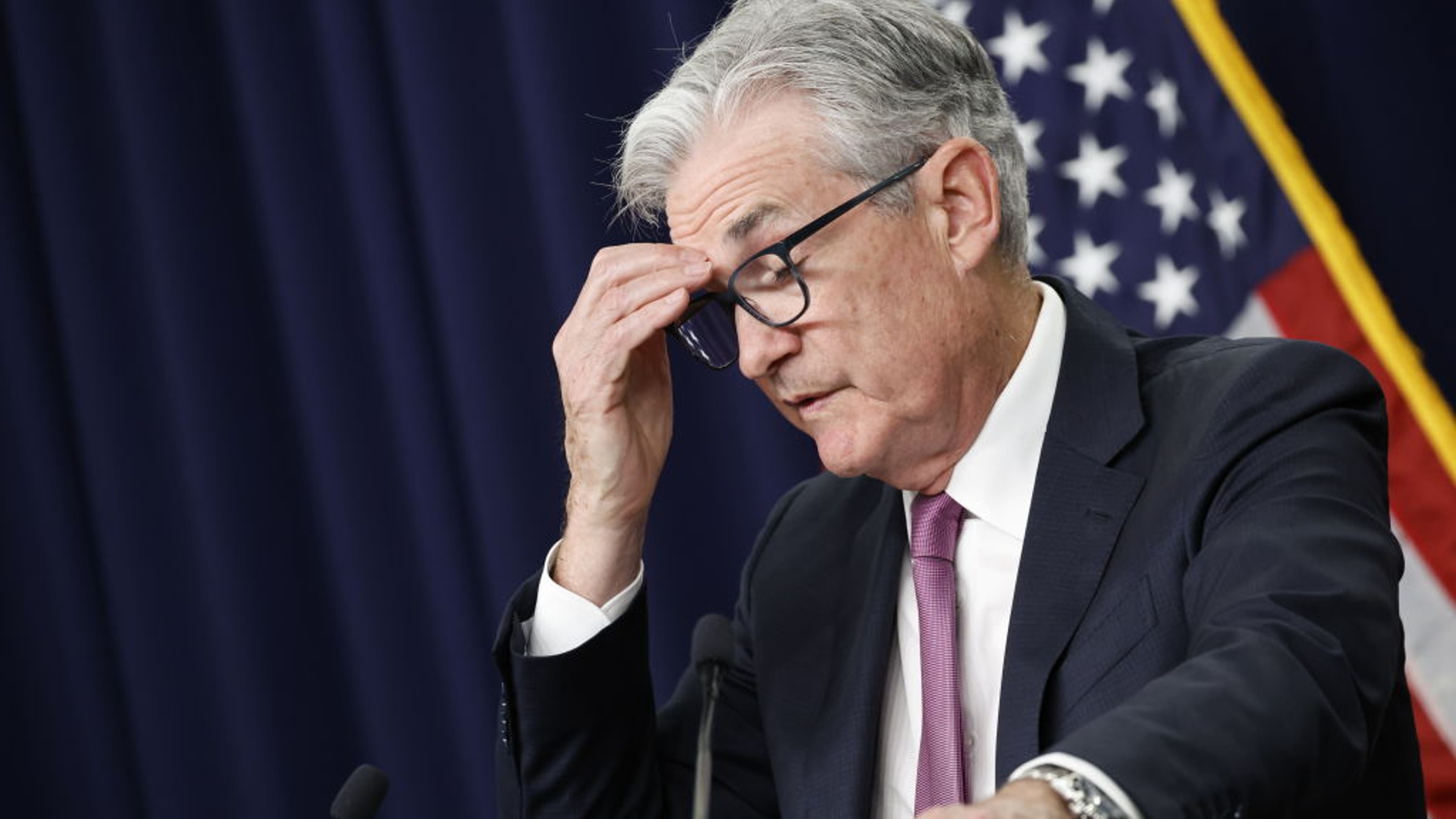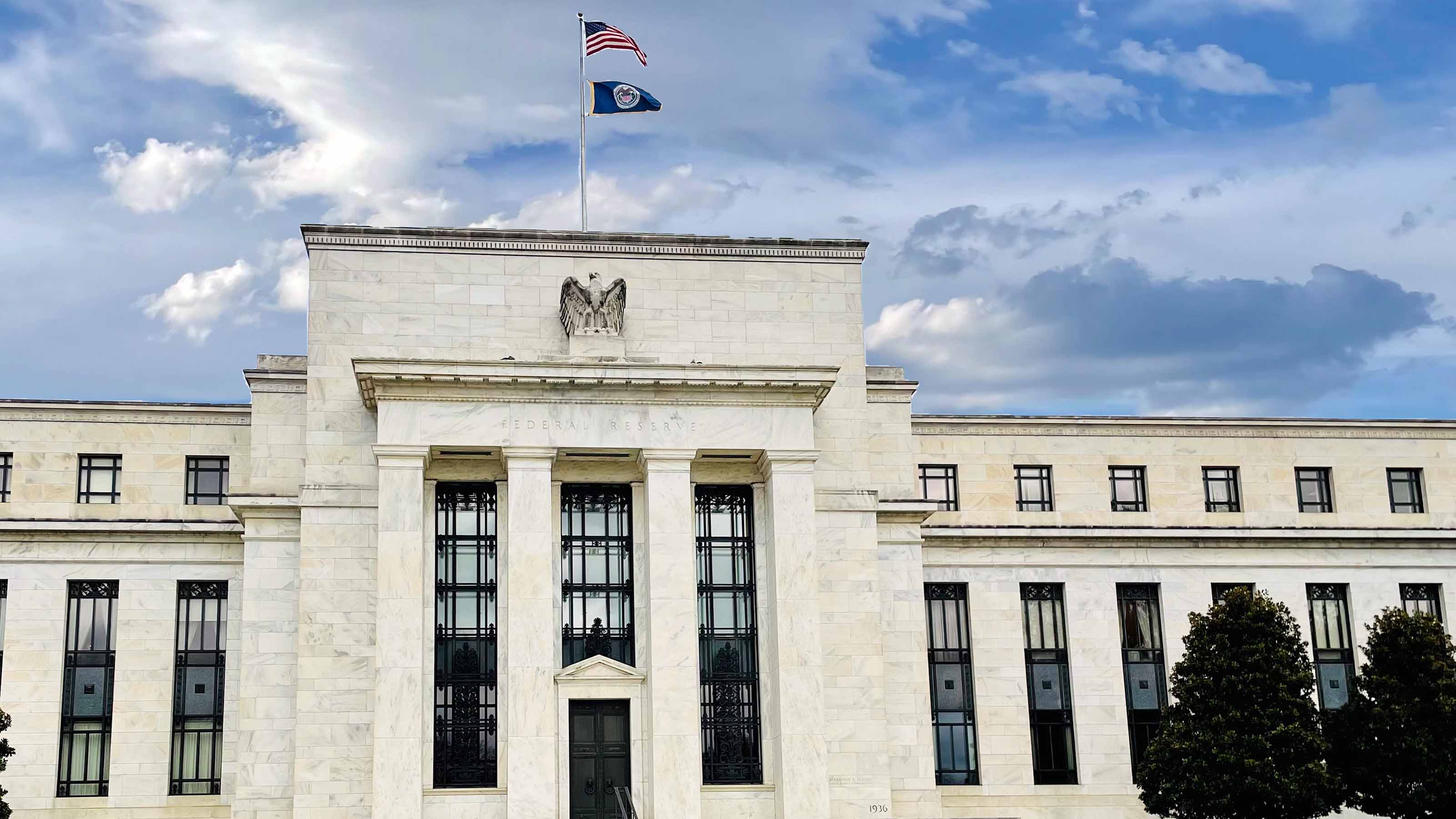
The Federal Reserve made the widely expected move of leaving interest rates unchanged for a third consecutive meeting when it wrapped up its regularly scheduled two-day policy confab on Wednesday.
More newsy was the quarterly Summary of Economic Projections (SEP), which suggested the long-awaited dovish "Fed pivot" has finally arrived.
Also known as the dot plot, the SEP signals three quarter-point rate cuts in 2024. Markets were pricing in a total of four quarter-point cuts next year prior to the Fed meeting, so this brings the FOMC closer to participants' more bullish expectations.
As for the latest policy decision, the Fed's rate-setting group, the Federal Open Market Committee (FOMC), kept the short-term federal funds rate at a 22-year high of 5.25% to 5.5%. The Fed's third consecutive pause comes amid mounting evidence that the economy is on a glide path to a soft landing. (That's where inflation is brought under control without clobbering the labor market.)
"Recent indicators suggest that growth of economic activity has slowed from its strong pace in the third quarter," FOMC officials said in a statement. "Job gains have moderated since earlier in the year but remain strong, and the unemployment rate has remained low. Inflation has eased over the past year but remains elevated."
In his post-meeting press conference, Fed Chair Jerome Powell cautioned that although the Fed itself no longer forecasts an economic downturn, recession "always" remains a possibility.
Either way, the long-awaited Fed pivot would finally appear to be here. (After all, a recession would necessitate rate cuts too.) Powell said Fed officials don't think further rate hikes are likely. The tightening cycle and fears about "higher for longer" are giving way to a narrative about loosening.
With the FOMC's latest rate decision now a matter of record, we turned to economists, strategists, investment officers and other pros for their thoughts on what the move means for markets, macroeconomics and monetary policy going forward. Please see a selection of their commentary, sometimes edited for brevity or clarity, below.
Interest rates: the experts weigh in

"It is clear, at this time, that unless a very negative inflation surprise occurs, the Fed is done increasing interest rates during this tightening cycle, even though it has left the door to new hikes open. Markets seem to have taken this decision, as well as the SEP and the new dot plot, very positively and seem to think that the Fed is moving toward the markets' view for interest rates. If markets were looking for a 'dovish pivot' we believe that this is the closest the Fed has been to a dovish pivot in almost two years." – Eugenio Alemán, chief economist at Raymond James
"As expected, the Federal Reserve kept the federal funds rate unchanged at the conclusion of the December FOMC meeting. With that being said, the Fed also released updated economic projections at the end of the meeting that showed a dovish tilt at the central bank. Most notably, the updated dot plot showed that the median Fed member expectation for the federal funds rate implies three 25 basis point [0.25%] interest rate cuts by the end of 2024. Additionally, the language in the post-meeting press release was slightly more dovish than the last press release in November, further signaling a potentially more accommodative central bank as we head into the new year. Markets reacted positively to the dovish messaging, with equities rising and Treasury yields falling immediately following the release. Futures markets, which entered the day pricing in four 25 basis point cuts in 2024, priced in an additional cut following the meeting." – Sam Millette, director of fixed income at Commonwealth Financial Network
"Minimal changes were made to the post-meeting statement's characterization of the current state of the economy. As we expected, the hawkish bias in the FOMC statement was softened, with the reference to 'the extent of additional policy firming' that may be appropriate being adjusted to 'the extent of any additional policy firming.'" – Jan Hatzius, chief economist at Goldman Sachs
"Traders expected caution coming into this release but instead it was dovish because the Fed acknowledged inflation has eased. It's a big change in the language that indicates policymakers see less need to aggressively tighten. Jerome Powell seems to be done taking the punchbowl away." – David Russell, global head of market strategy at TradeStation
"The Fed went against their own September projection of at least one more rate hike year, but the biggest thing is they acknowledged inflation is easing. FOMC members now project a core PCE of 3.2%, a big downward shift from the September estimate of 3.7%. This seems in line with what we would expect in 2024, amidst a relatively strong economy with inflation heading back to the Fed's target." – Sonu Varghese, global macro strategist at Carson Group
"Since the beginning of November, the market has priced in an additional two rate cuts for 2024 such that the fed funds futures now imply five cuts over the next year (to 4.18%). In total, financial conditions have eased by the equivalent of 100 basis points [1%] of Federal Reserve easing in the past six weeks. The challenge for the FOMC is that this impetus is at cross purposes to its stated mission – to bring inflation sustainably towards its 2% target. Today's statement was Powell's golden chance to press back on the markets' undermining of his policy. Instead, they used the occasion to congratulate themselves on a mission accomplished. I fear history will not be kind to this FOMC." – Brad Conger, deputy chief investment officer at Hirtle Callaghan & Co.
"The Fed will wrap up its year with a slight sense of satisfaction, as core PCE inflation has decreased from its peak of 6.6% to 4% without a major slowdown in the economy or sharp rise in unemployment. However, with potential downside risks to economic growth outweighing upside risks to inflation for the first time in several years, we believe there is a growing case for adding duration alongside exposure to high-quality fixed income assets in 2024." – Whitney Watson, global co-head and co-chief investment officer of fixed income and liquidity solutions at Goldman Sachs Asset Management
"Powell cited an improved supply picture as one of the key reasons why the economy has been so strong in 2023. Taking it a step further, Economics 101 tells us that prices (inflation) should stabilize as supply improves, if demand simply holds steady. Put differently, if supply is looking better then the Fed can likely conclude they need to constrain demand by less than previously believed in order to return inflation to their 2% target, and that supports the shift to a Fed pause and eventually rate cuts." – Josh Jamner, investment strategy analyst at ClearBridge Investments
"There was a divergence in the Fed's September dot plot of two projected rate cuts in 2024 versus the market projecting four to five rate cuts. The big question today was whether the Fed's updated dot plot would move towards or away from the market's projections. The markets jumped higher as the Fed seems to be moving more in the market's direction with three projected rate cuts, which potentially widens the path to a soft landing and keeps the Goldilocks narrative alive. While the early Santa Claus rally which started in November seemed to be stalling out, today's more dovish message from the Fed may reignite that market rally as we close out 2023." – Eric Sterner, chief investment officer at Apollon Wealth Management
"The FOMC has added another 25 basis points to its rate cut hopper for next year in addition to not hiking again this year (so the funds rate is 50 basis points lower than before), and they are now starting to discuss when to release them. This alone is a dovish signal. However, keeping rate hikes on the table (admittedly collecting dust) and with total and core PCE inflation just barely dipping below the 2.5% mark by the end of next year, we still judge rate cuts will commence later rather than sooner, still by the end of 2024 Q3." – Michael Gregory, deputy chief economist at BMO Capital Markets







